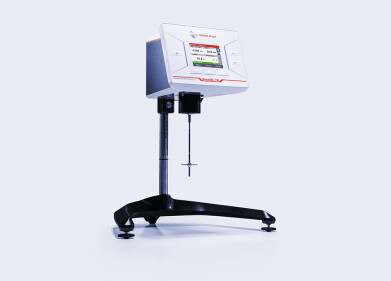Analytical instrumentation
New Mercury Monitoring System for Natural Gas
Dec 16 2015
Mercury Instruments (Germany) has developed a system for automatic and continuous monitoring of mercury levels in natural gas and other flammable gases. The mercury analyser (and accessories such as a calibrator) is installed in a pressurised enclosure that is approved for use in hazardous zones 1 and 2 (ATEX, IEC-Ex). A heated system takes the sample and guides it to the analyser via stainless steel tubing that has been surface-treated for ultra-low adsorptivity.
The UT-3000 Mercury Ultratracer is used to precisely measure mercury levels in natural gas. A proprietary gold collector (GoldTrap) selectively absorbs mercury from a constant sample volume. The collector is then rapidly heated for a very short period of time, thus releasing the mercury instantly into an optical
cell where it is quantitatively detected by means of atomic absorption measurement (AAS).
In contrast to atomic fluorescence systems, the UT-3000 does not require special carrier gases. Air is used as carrier gas, thus keeping the gold surface clean. Compared to other systems the lifetime of the gold collector is thereby greatly prolonged. With the UT-3000, interference from hydrocarbons or other gaseous components is insignificant.
Mercury Monitoring System for Natural Gas: MMS-NG The integrity of the sampling system is just as important as the analyser itself. To sample natural gas from a pipeline, the sampling system must reduce pressure and guide the sample from the sampling point to the analyser, leaving the mercury concentration
unchanged. The sampling system should show a rugged design for use in hazardous zones, time lag should be minimal. The MMS sample conditioning system by Mercury Instruments fulfills all these
requirements. The surface of the pressure-reduction system is heated to obviate condensation and adsorption of mercury caused by the Joule-Thomson cooling effect. A specially coated coalescing
filter effectively removes entrained liquid droplets. All tubing and filter surfaces are specially coated for ultra-low mercury adsorption.
For process control it is often useful to monitor mercury levels at different process points, e. g. the
inlet and outlet of a mercury removal system. Our microprocessor controlled multiplexer unit feeds
samples from up to 16 sampling points to the analyser for sequential measurement. Using the fast loop principle all sample lines, including those currently not being measured, are continuously purged with sample gas and thereby constantly preconditioned. A short response time is the result. Specially coated bypass filters retain entrained liquids (coalescing filters can also be used).
To maintain high quality measurements a regular calibration check is highly recommended. Calibration can either be performed manually or automatically using an Automatic Calibration Unit. The calibration device is maintenance-free and does not require refilling. It is permanently installed in the analyser cabinet, extracting mercury vapour from a thermoelectrically cooled saturation chamber and injecting it into the UT-3000 calibration port by means of a digital syringe. Up to 12 calibration points can be programmed, and automatic calibration can be set to a fixed time interval or daily hour.
During the last few years Mercury Instruments has installed nearly thirty Mercury Monitoring Systems
for Natural Gas worldwide.
Digital Edition
PIN 25.5 Oct/Nov 2024
November 2024
Analytical Instrumentation - Picturing Viscosity – How Can a Viscometer or a Rheometer Benefit You? - Sustainable Grease Formulations: Evaluating Key Performance Parameters and Testing Method...
View all digital editions
Events
Jan 20 2025 San Diego, CA, USA
Jan 22 2025 Tokyo, Japan
Jan 25 2025 San Diego, CA, USA
SPE Hydraulic Fracturing Technology Conference and Exhibition
Feb 04 2025 The Woodlands, TX, USA
Feb 05 2025 Guangzhou, China



















